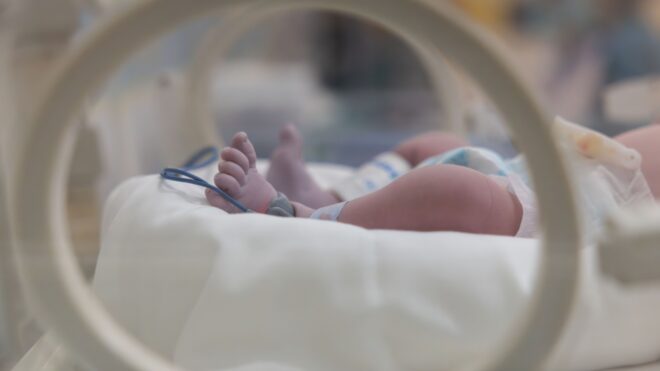Shoe shopping with a toddler today can feel downright overwhelming. First off, the fashion options are endless, from rubber to leather soles, flip-flops to cowboy boots to Crocs. At the same time, many toddlers are learning to take their first steps or have just learned how to walk, so they aren't so steady on their feet. As such, finding the right style and fit carries surprisingly high stakes, since kids without the right shoes can trip, fall, end up with stitches in their lip or worse. To avoid making some fatal mistakes on your next toddler shoe-shopping spree, heed these warnings and smarter solutions below.

Mistake #1: Choosing a stiff, sturdy shoe to protect a toddler's feet.__
Why it's a bad idea:__ "Your feet have muscles to support themselves," says Katy Bowman, biomechanist and author of Move Your DNA. Stiff shoes weaken those foot muscles. The result: More stumbling and less endurance for long walks.__
Instead do this:__ Look for a shoe that fully protects the foot from debris or rough terrain, but that has a flexible sole. "This allows the feet muscles to do their work," says Bowman. A good test: Try folding the shoes in half to ensure that the shoes are flexible.
Mistake #2: Choosing miniature versions of grown-up styles like flip-flops, kitten heels, slide-ons, and cowboy boots.__
Why it's a bad idea:__ "Kids shoes should be designed with kids in mind and should allow kids to do what they do best: play," says Sharon Blumberg, footwear expert at CHOOZEShoes.com. "Many kids shoes today, especially the styles that are smaller versions of the women's shoes, do not have the features and benefits that are important for gait development." For instance: Seemingly benign features like slide-ons can force toddlers to have to "grip" the shoe with their toes so it doesn't slide off. This, in turn, can cause a host of problems down the road like back pain, knee pain, and beyond.__
Instead do this:__ Avoid hard, tough soles and definitely avoid heels, flip-flops, high boots, and even Crocs. Look for a soft, flexible shoe that is fully attached to the foot, doesn't pass up over the ankle, and doesn't elevate the heel over the toe. "Think 'minimal interference with natural gait' while providing protection." says Bowman. "Consider how shoes work for the body, not for the outfit." Adjustable straps, extra padding, flexible uppers, and soft materials are also important. If fancy shoes must be worn, limit to a few hours like at birthday parties.
Mistake #3: Buying shoes slightly big so toddlers will "grow into them."__
Why it's a bad idea:__ "Parents often want to buy bigger shoes because they assume they will last longer," says Blumberg. But that means the shoes don't fit — which leaves your toddler vulnerable to trips and falls. As much as you're tempted to buy a 1/2 size bigger to make them last longer, don't__.
Instead do this:__ Have your child properly fitted at a store, or else do it yourself: Download a shoe sizing chart from Pediped or their measuring app from your iPad. Then have your kid wear a pair that fits. Period. There should be a thumb's width between the end of the shoe and the big toe. Make sure the heel isn't slipping when he walks.
More from The Stir: 6 Best Shoes to Support Baby's First Steps (PHOTOS)
Mistake #4: Keeping toddlers in slippery shoes or booties once they're walking well.__
Why it's a bad idea:__ For a toddler's first shoes, leather or canvas soles are fine. But once they're walking well, these types of soles do more harm than good, messing with their traction and their gait, says Bowman.__
Instead do this:__ Once toddlers have learned to walk, use soles that provide some grip.
Mistake #5: Assuming the shoes still fit fine if the toddler doesn't complain.__
Why it's a bad idea:__ "Parents assume that their toddlers' shoes still fit as long as they don't say it hurts," says Blumberg. "But many kids do not speak up and are walking around in shoes that are way too tight."__
Instead do this:__ Re-check your child's size every two months to ensure they haven't had a growth spurt and need a new pair. You can also gauge how things are going by seeing if their toes are rubbing up against the front of the shoe. If so, it's time for a new pair.
What shoe-wearing rules do you follow for your toddler?
Images © Johnny Buzzerio/CORBIS; © iStock.com/pterwort




